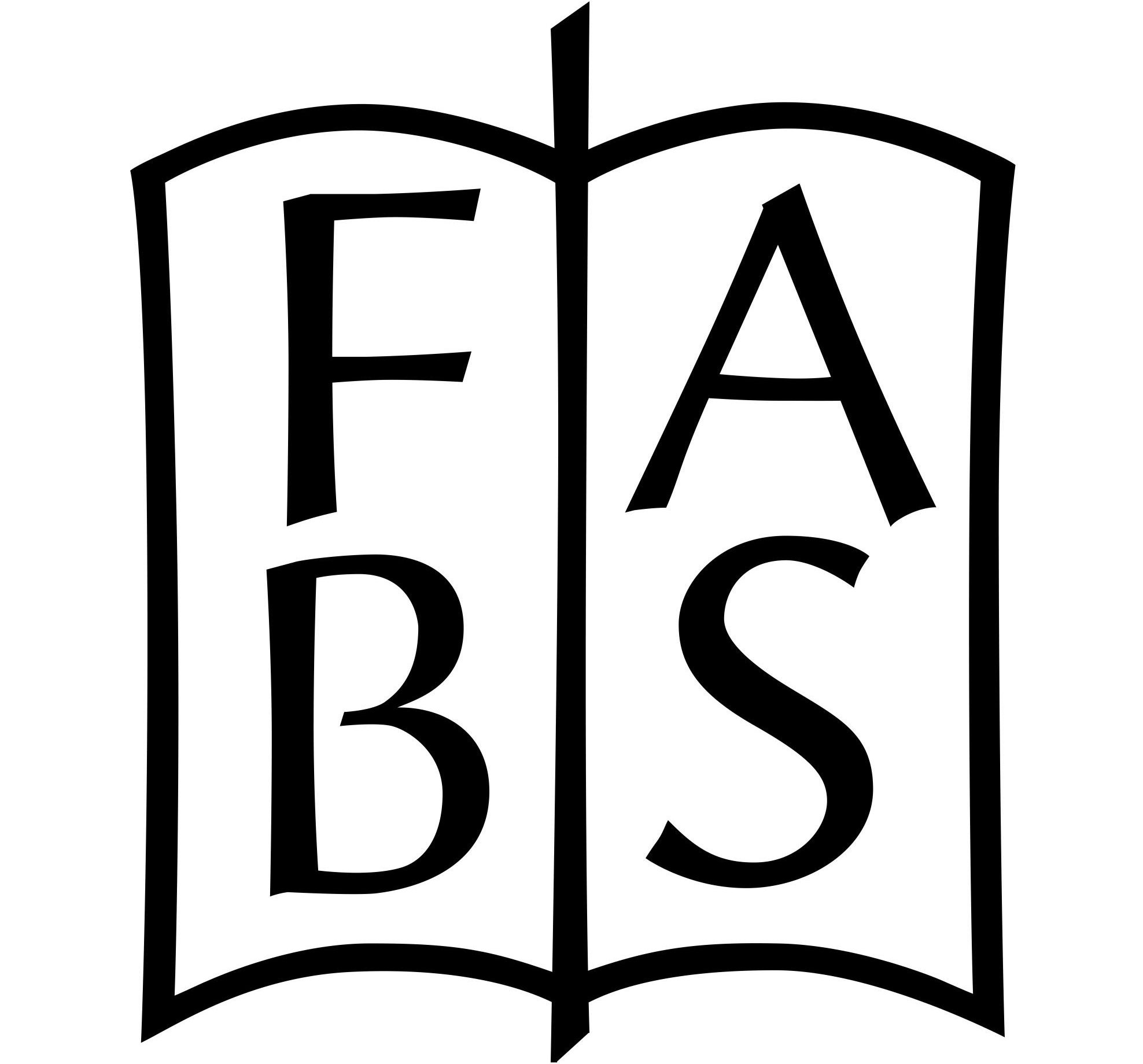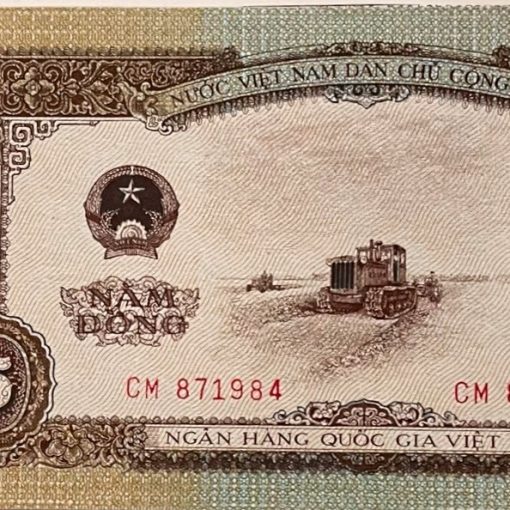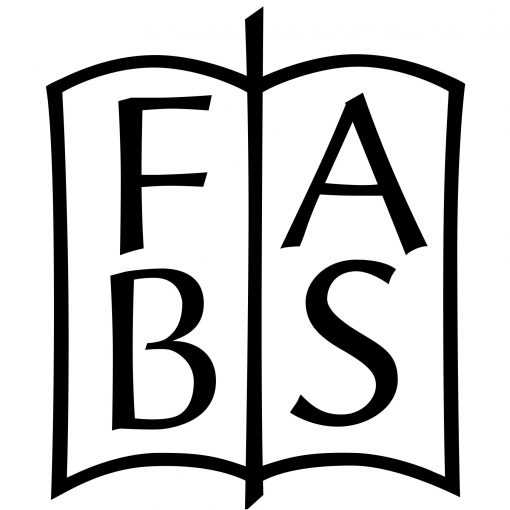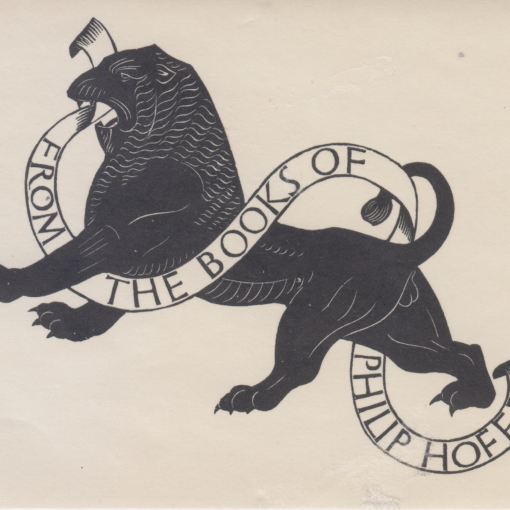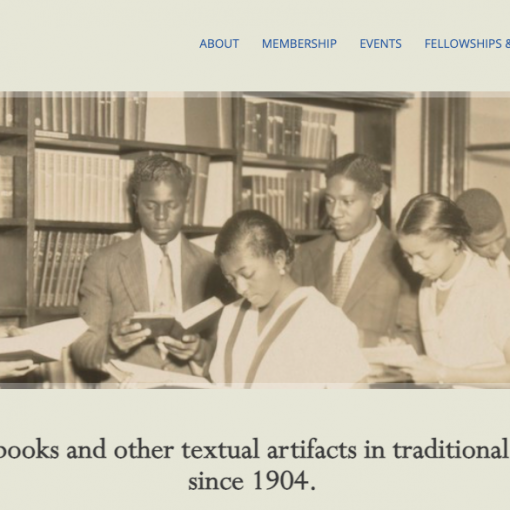By Bruce Kennett
Wise and witty stories, they are a pleasure to read, but to savor
the line and color art is its own special experience. — Steve Heller
The name W. A. Dwiggins will certainly be familiar to many FABS members. Dwiggins (1880–1956) was a quintessential maker, and a volcano of creativity. He loved life and had a witty, sunny, whimsical disposition.

For those who don’t know of him already, Dwiggins is widely recognized for his work in type design, book design, and illustration. A virtuoso calligrapher and versatile illustrator, “WAD” also loved making decorations and ornament that he built up from tiny stencils cut in celluloid sheets. Many people who think they know the scope of Dwiggins’s work are unfamiliar with other aspects of his career and private life: he was a talented watercolorist and sculptor; he built furniture, and was an expert maker and flyer of kites. He often used satire to advocate for change, understanding that humor was more effective in influencing people than lecturing and finger-pointing.
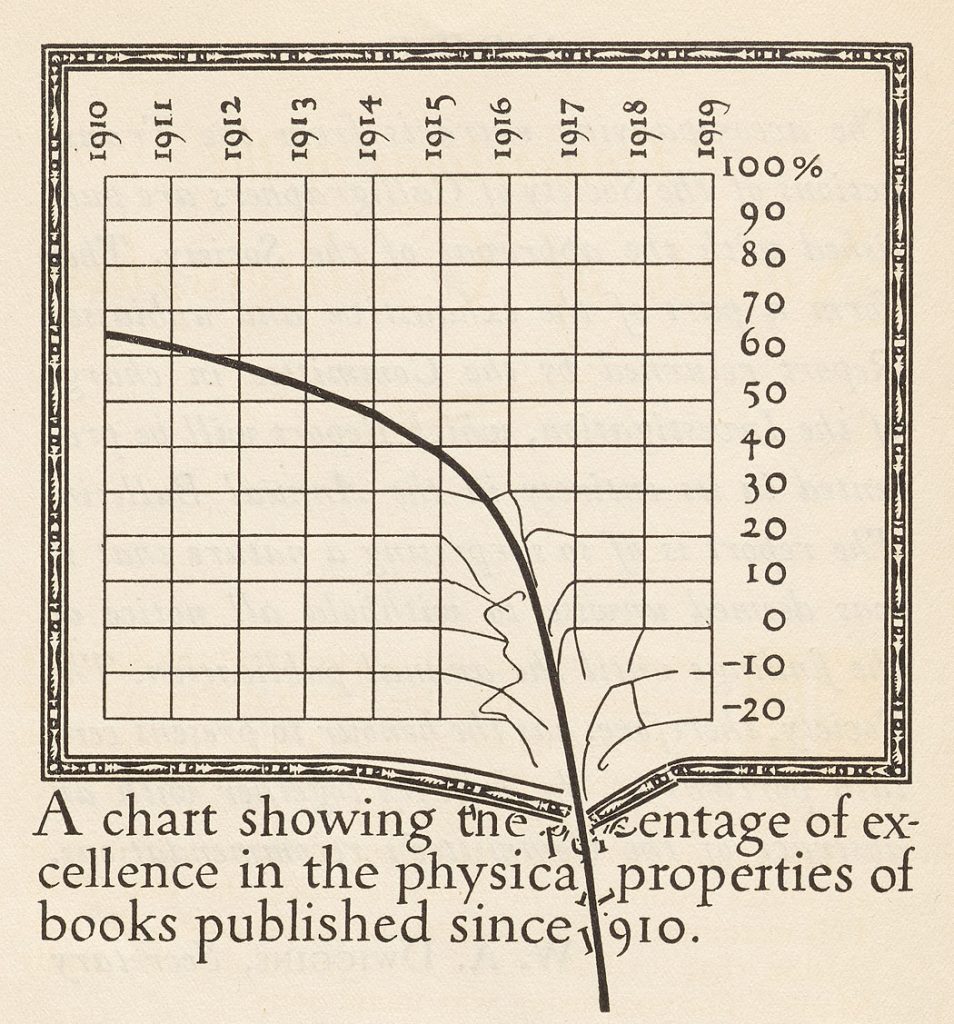
Dwiggins is also famous in the puppet world: he created dozens of marionettes, often incorporating a counter-balancing system he had developed that makes the puppets more natural in their posture. (WAD’s engineering techniques are still part of the curriculum at The Ballard Institute in Connecticut, which is the world’s premier school for the study of puppetry.) For these marionettes Dwiggins wrote plays, designed costumes, constructed stage sets, carved props, and planned elaborate lighting schemes. In the 1930s he built two private marionette theaters next to his home in Hingham, Massachusetts.

Beyond all this, Dwiggins was a born storyteller. He grew up reading classic adventures stories such as Treasure Island, New Arabian Nights, King Solomon’s Mines, and The Mysterious Island. By the time he was thirty he had begun to write actively: short stories, art criticism, and technical essays on design and printing. His 1928 Layout in Advertising (published by Harper and Brothers) served for decades as a reference for graphic designers.
But his most personal works were the stories that chronicled an imaginary land he called Athalinthia, and the people who lived there. Dwiggins was fascinated by human nature; he also loved to describe exotic places, buildings, costumes, cultures, and rituals. Athalinthia gave him the chance to do this, and to explore human behavior in all its manifestations: love, pride, envy, whimsy, pageantry, curiosity, duplicity, adversity, celebration . . . and adventure! From 1910 until the mid-1920s, while commuting by train to his studio in Boston, he passed the time by writing out these stories longhand with a fountain pen. He drew more than a hundred illustrations to accompany them. At the end of the 1920s he worked diligently to get the stories published as a collection. He made a complete dummy and pitched the idea to Knopf, Harper, George Macy of the Limited Editions Club, and printer W. E. Rudge. Sadly, no one was willing to take on the collection. Dwiggins was heartbroken, but was so busy with other projects, he had to put Athalinthia aside.
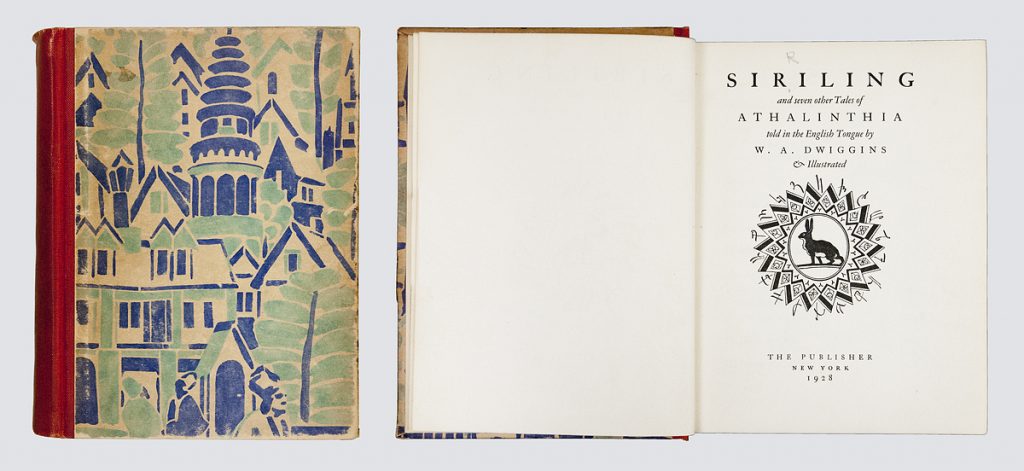
In later years he was able to see three stories published as individual titles, plus fragments of a fourth (these are discussed in detail in the afterword of the new book), but his dream of seeing the Athalinthia tales as a group was never realized.

In 2003 I began a series of trips — what turned out to be about eighty, over fourteen years! — to the Boston Public Library’s Dwiggins Collection, to research and photograph for my illustrated biography of the artist: W. A. Dwiggins: A Life in Design (Letterform Archive, 2017). While exploring myriad other aspects of WAD’s life and career, I made the astonishing discovery that all of the Athalinthia stories were present in the files, accompanied by illustrations, and ready to print. Early on, I resolved that if I could somehow accomplish this, I would publish the stories for him, acting as his agent across a gulf of nearly a hundred years.
And now this has come to pass: All of the stories have been gathered into one volume, with more than a hundred illustrations — many of them never seen before! The book is the exact trim size Dwiggins planned back in 1928, and the text has been set in his own Caledonia typeface, with his Plimpton Initials used for display.
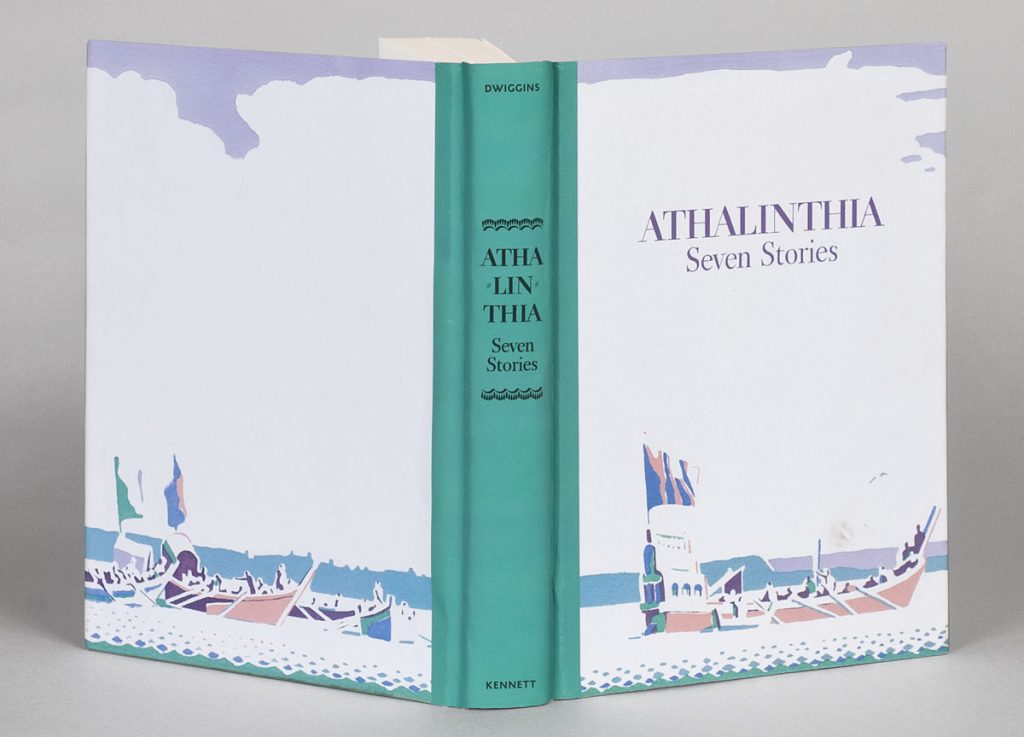
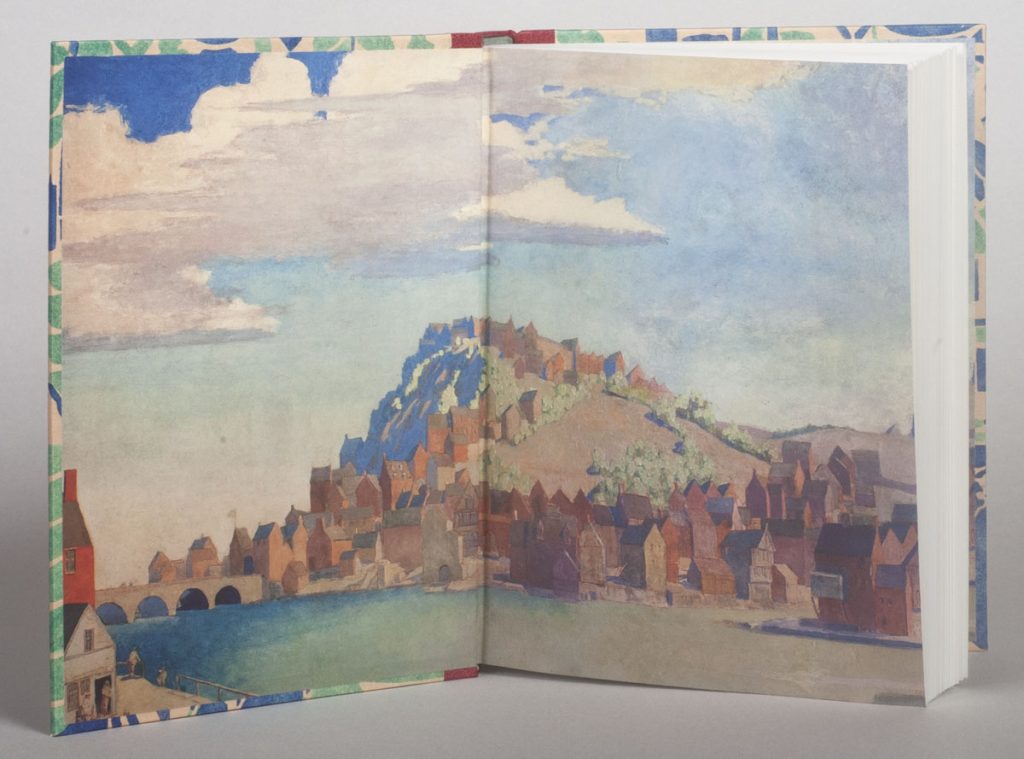
While Dwiggins had imagined mostly pen-and-ink drawings for that early edition, and only used color for his later, short-run versions of the stories, the flexibility of modern full-color printing has enabled me to include many of the gorgeous pictures that he created with brush, stencils, and gouache, exhibiting the palette that he liked to call “faded bright colors.” This is Dwiggins at his most fanciful, his most personal; the pages glow with his bright spirit
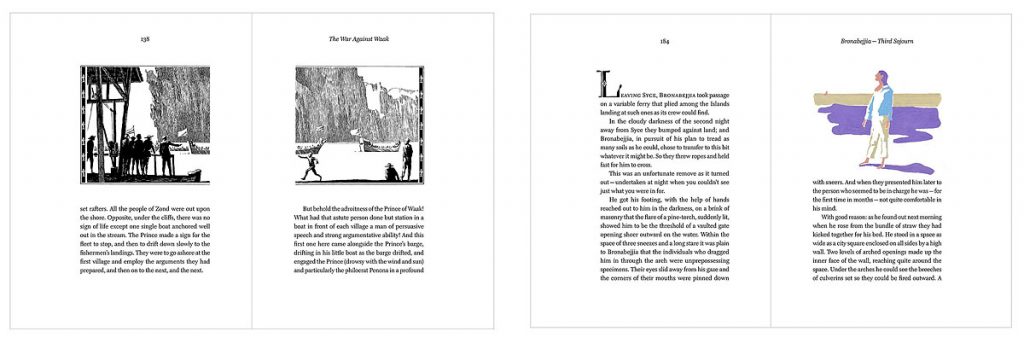

I really appreciate [FABS blog editor] Jennifer Larson’s inviting me to write about this project. Athalinthia is my love offering to Dwiggins, and I in turn now offer it to the larger book world, hoping to spread far and wide as much of WAD’s positivity as we can. Heaven knows we need that these days. The books may be ordered from Katherine Small Gallery in Somerville, Massachusetts, or signed copies directly from me.
The Details: Everything has been done to the highest standards of quality. 256 pages, trim size 5-3/4 x 7-1/2 inches upright, Smythsewn and casebound. Printed on acid-free Finch Fine 80-lb text with grain correct for binding; full color throughout; high-resolution stochastic screening on all the illustrations using Kodak’s Staccato technology; printed on a Komori Lithrone press with fast-drying UV inks for greater color brilliance on uncoated stock; 216 pages of Dwiggins stories; 36-page illustrated afterword by Bruce Kennett; full-color endpapers; produced entirely in New England, thus with all-US labor and materials. $75 plus shipping.
ksmallgallery.com/dwiggins 617-576-0584
bruce@brucekennett.com
Bruce Kennett is a writer, photographer, designer of books and exhibits, teacher, and lecturer. He came up in hot-metal and letterpress, studied calligraphy and book design with Friedrich Neugebauer in the 1970s, and later worked as managing director at Maine’s Anthoensen Press. Bruce has given presentations about Dwiggins since 1980, that interest culminating in his comprehensive 2017 biography of WAD and the present book. Bruce is a founding member of the Baxter Society of Maine, and also a member of the Caxton Club and Boston’s Society of Printers.
